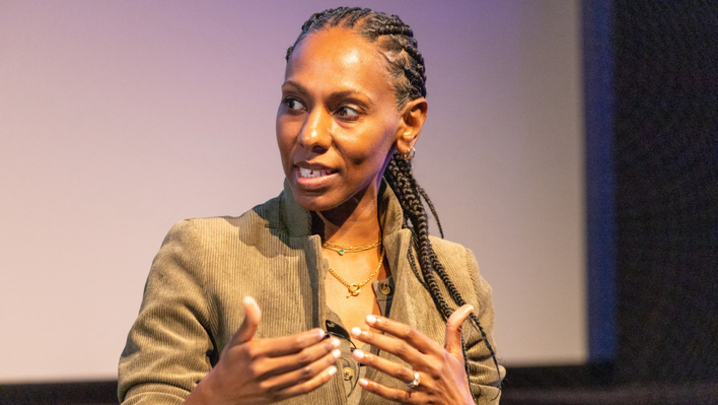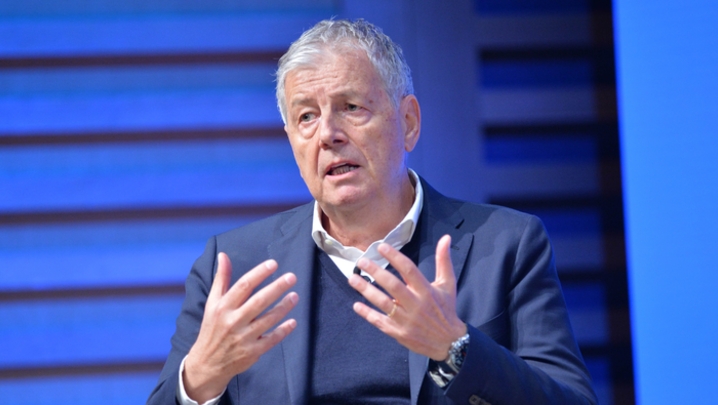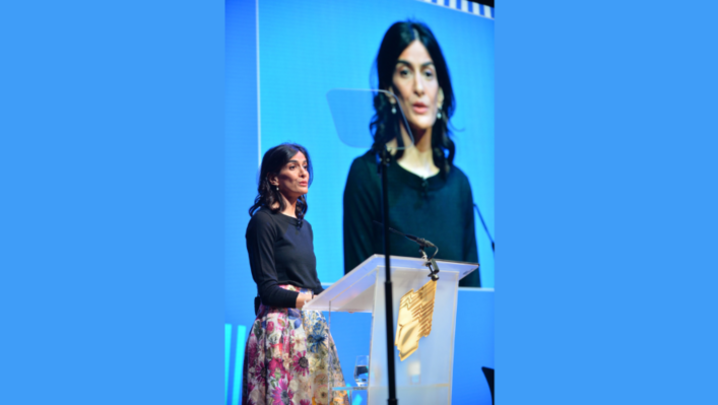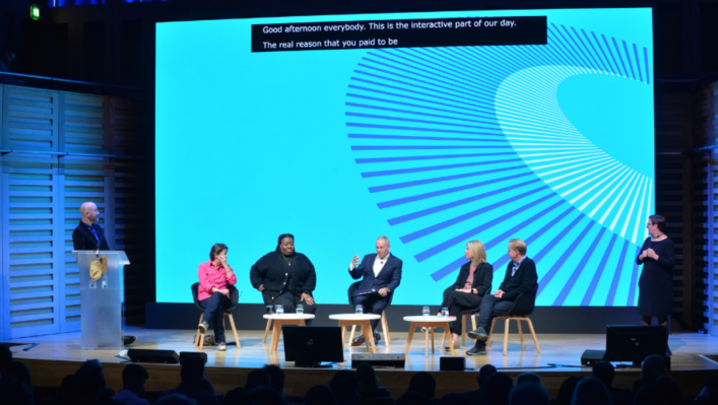The RTS hears how an explosion of open-source material is transforming investigative journalism.
The work that we do… is really expensive, resource-heavy and time-heavy. Maybe we can pull together a really big investigation every two months, but we see the impact and the audiences – that’s what keeps CNN and other [news] organisations… investing in investigative work.”
Nima Elbagir, CNN’s chief international investigative correspondent, was extolling the virtue of combining old-fashioned journalism with forensic open-source investigative techniques to compile reports from the world’s trouble spots.
Typically, open-source material includes social media posts from, and footage shot by, eye-witnesses, which CNN then submits to a thorough process of verification. Was it filmed when and where it claims to have been shot? Does it show what it purports to show?
Using open-source footage, explained investigative producer Katie Polglase, “makes information public. If you know where to look, anyone can find it.”
Fellow investigative producer Gianluca Mezzofiore added: “The Ukraine war is a watershed for open source because it’s where we’ve [become] mainstream…. [News organisations] are starting to integrate open-source [material] into the core operation of the newsroom.”
Both Polglase and Mezzofiore are based in the multinational news channel’s London bureau.
Earlier this year, CNN broadcast a report on the launch of Russian Smerch cluster rockets – each projectile unleashes 72 sub-munitions over an area the size of a football pitch – against Ukranian civilians in Kharkiv. Such use of cluster bombs is banned by international treaty and any attack that indiscriminately targets civilians could be considered a war crime.
By analysing satellite imagery, harnessing social media video and making trajectory calculations, as well as carrying out traditional, on-the-ground journalism, the news organisation was able to identify the rocket artillery brigade that had launched the rockets from inside Russia. It found that the brigade reports directly to the same military leader – Colonel General Alexander Zhuravlyov – who had overseen brutal attacks on Aleppo in Syria.
Following the CNN broadcast, revealed Elbagir, “Ukranian prosecutors have opened an investigation into General Zhuravlyov in the hope that they will be able to issue an indictment”.
Senior producer Barbara Arvanitidis praised Polglase and Mezzofiore for their “extraordinary work” in pinpointing which Russian artillery brigade had launched the rocket attacks. But, she added, “It was also so important to get out there to verify [the attacks], with our own eyes, to film it ourselves, and also to meet the people who had witnessed it…. Being in the field is so important.”
The challenge for Arvanitidis when compiling upsetting reports is to “get an audience to sit and watch from start to finish… when it’s a story that’s being told so far away that people don’t necessarily feel they can relate [to it].
“It’s actually quite basic…. If you can make a connection… to basic human emotion, then you can get that viewer to sit and watch…. Engaging first on a very emotional, human level is important.
“The tools we now have are incredible, they’re mind-boggling, but the basics of storytelling remain… otherwise, no one would watch or it would be a [much] narrower audience. What I’m trying to do is to get my 17-year-old to watch, as well as my 77-year-old mother – when you have that sort of range, you’ve got to be able to make it relatable and get people engaged. The basics of narrative and storytelling are absolutely crucial.
“The broader the narrative is… the more people are going to watch… and more people are going to be upset and demand that their congressman or their MP makes change.”
Reporting on often horrific events takes its toll on journalists. But reward comes with the positive change reports can provoke. Elbagir said: “The fact is we can tangibly see that in some small way [our reports are] having an impact on people’s lives. It keeps you coming back.”
Nigeria: unravelling the Lekki toll gate massacre
CNN analysed hours of video filmed by protesters to prove that the Nigerian army fired live rounds into a crowd at the Lekki toll gate in October 2020, killing and wounding a disputed number of people.
‘When this incident happened, we went online to see what footage was out there,’ recalled Katie Polglase. ‘We then put out a call saying, “We’re investigating this, if you have anything… send it to us in any way you feel is safe and secure for you.”’
The footage was verified as accurate, using metadata and geo-location to prove that it was filmed that night at the Lekki toll gate. Polglase added: ‘Rather than speaking to a handful of sources, we [had] hundreds of people sending us footage, meaning that the accuracy of the piece and our understanding of what had happened that night was better.’
The CNN team also used more traditional investigative journalism, proving that the bullets fired by the army had been bought from Serbia by the Nigerian Government.
‘Open source [reporting] does get you very far along but, in addition to that, there are still these good old-fashioned ways of doing things, talking to people, relying on sources, the cross-referencing of sources,’ said Elbagir.
More than a year later, a government-appointed panel, which frequently referred to the CNN reporting, concluded that there had indeed been a ‘massacre’ of unarmed protesters, which contradicted previous official accounts of the incident.
Session Four, ‘The news evolution’, featured: CNN senior producer Barbara Arvanitidis and CNN investigative producers Gianluca Mezzofiore and Katie Polglase. It was chaired by CNN chief investigative correspondent Nima Elbagir and produced by Barbara Arvanitidis and Jonathan Hawkins. Report by Matthew Bell.







